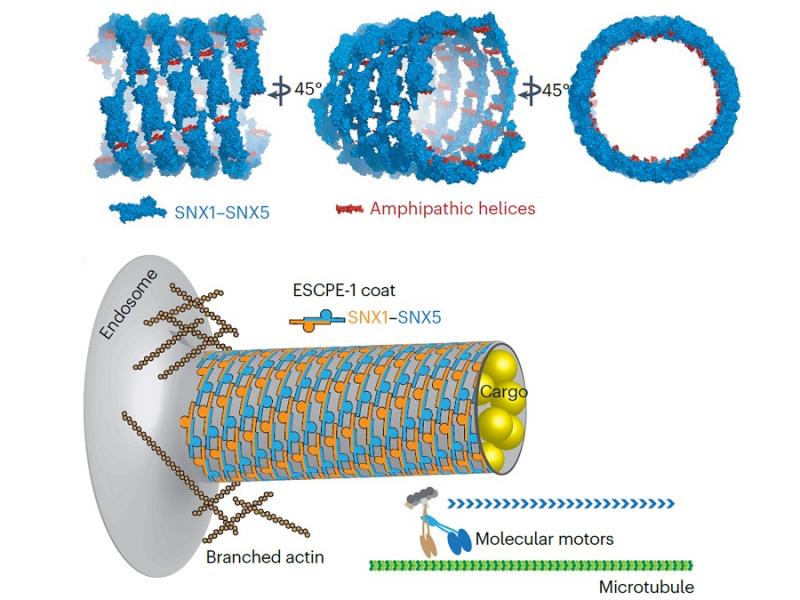Researchers from CIC bioGUNE, Instituto Biofisika, NIH (National Institutes of Health, EEUU), BSC (Barcelona Supercomputing Center) and ICVV (Instituto de Ciencias de la Vid y del Vino) find that proteins that need to be recycled coordinate their own "selective collection"
The research work, published in the scientific journal Nature Structural & Molecular Biology, manages to understand protein recycling processes at atomic level, which is fundamental to design mechanisms that can fix errors that make that some proteins are not efficiently recycled or end up in unwanted cell locations
A multidisciplinary research team from CIC bioGUNE, Instituto Biofisika, NIH , BSC and ICVV has revealed the structure of one protein recycling machinery in cell. This machinery is known as ESCPE-1 (“Endosomal Sorting Complex Promoting Exit 1”) and can transport and reuse more than 60 different proteins.
A daily activity in our household chores is to separate paper, glass, cans and plastic and then dispose of them in the appropriate containers. Recycling helps us to reduce the consumption of resources, save energy and minimize waste. Similarly, our cells recycle many of their components to achieve the same benefits.
This research has been published in Nature Structural & Molecular Biology, one of the scientific journals with highest impact at international level in the field of structural and molecular biology.
Conceptually, the study provides a very simple, yet fundamental idea. Proteins that need to be recycled coordinate their own separate collection.
The work, that has been developed along the last five years, has used two of the most relevant techniques in structural biology, X-ray crystallography and cryo-electron microscopy, together with computational biology methods and energetic calculations developed by Miguel Romero Durana and Juan Fernández Recio from the group of Structural Bioinformatics, Modeling and Biological Mechanisms at the ICVV, which, as a whole, have enabled this study to be carried out successfully.
The full article can be found here: https://doi.org/10.1038/s41594-023-01014-7








